Color Match Finder: Local Color Analysis Services Near You

Key Takeaways
- Color analysis leads you to the colors that naturally elevate your features, making day-to-day style decisions simpler and more satisfying.
- Knowing your personal color palette gives you confidence, makes shopping easier, and saves you money on things that just aren't you.
- In-person and virtual consultations provide amazing experiences — decide which works best for your locale, comfort and lifestyle.
- Trustworthy color analysists are trained professionals. Always do your homework on qualifications, tools, and client reviews before you book.
- By incorporating your personal palette into not just your clothes but your accessories and even home decor, you create a more cohesive and authentic personal brand.
- Embracing your colors supports sustainable fashion – you shop conscientiously and fill your closet only with pieces you really adore.
Color analysis near me aids individuals in discovering the optimal colors for their complexion by connecting them with professional color analysts in their vicinity.
Or maybe you opt for a color analysis to feel more confident, select the right clothes, or revamp your look. Sessions typically incorporate straightforward testing and practical recommendations.
Local color analysis brings a personal flair and simplifies style. If you're not familiar with color analysis, here's how it works and what to expect.
Understanding Color Analysis

Color analysis is a technique that helps individuals uncover their personal color palette, enhancing their natural beauty by coordinating colors with their skin, hair, and eyes. This process goes beyond trends, focusing on flattering colors that work best for each person. It's about using biology and fashion to empower and simplify one's personal style.
The Core Concept
Color analysis begins with determining your undertone — your skin's undertone, your hair color, and your eye color. A consultant typically employs color cards or drapes to observe what hues highlight your best qualities. For instance, a person with cool-toned skin and dark hair might rock rich jewel tones such as sapphire or emerald.
Brown-eyed ladies with warm undertones can dazzle in earth tones like olive or rust. Once these major colors are determined, the analyst designs a personal palette for you. This palette then becomes a guide for selecting clothing, makeup, and even jewelry.
You'll be able to quickly identify which colors will make you look radiant and fresh, and which ones will wash you out or make you appear lethargic. Nailing the color harmony is essential. When your clothes, makeup, and accessories all match your natural coloring, everything looks more polished.
It's not to say that you should have matching pieces, but that you know which tones complement each other. Seasonal palettes—Spring, Summer, Autumn, and Winter—sort these colors into easy-to-use groups so you can quickly find what works.
The Personal Benefits
Color analysis can transform a cluttered closet into a capsule wardrobe that works. Shopping becomes less overwhelming and impulse buys drop once you know your personal colors. It's like a cheat sheet for every store you enter.
Dressing in your color type's colors can really elevate a mood. Most individuals feel more comfortable, confident, and genuine in colors that flatter them. This confidence frequently manifests in body language and comportment.
A bright personal color palette can aid in cultivating personal branding. The magic of color analysis is understanding which colors in your wardrobe and makeup will make you look more polished in professional and social settings.
The Different Systems
There are a couple of primary methods to perform color analysis. This seasonal method divides palettes into Spring, Summer, Autumn and Winter, each containing a distinct range of colors determined by warmth and coolness and intensity and softness.
The tonal approach considers characteristics such as light, deep, warm, cool, clear, or muted.
| System | Strengths | Weaknesses |
|---|---|---|
| Seasonal | Easy to follow, visually clear | Can be rigid, less precise |
| Tonal | More personalized, flexible | Takes longer to learn |
Each one of us is assigned to a 'color type' according to our own individual combination of skin, hair and eye colors. Some folks fit perfectly into a season, while others thrive with a looser system.
Choosing the appropriate system is contingent upon your desires. If you like clean rules, the seasonal method fits the bill. If you desire a more bespoke method, the tonal system provides more flexibility.
How to Find Color Analysis Services
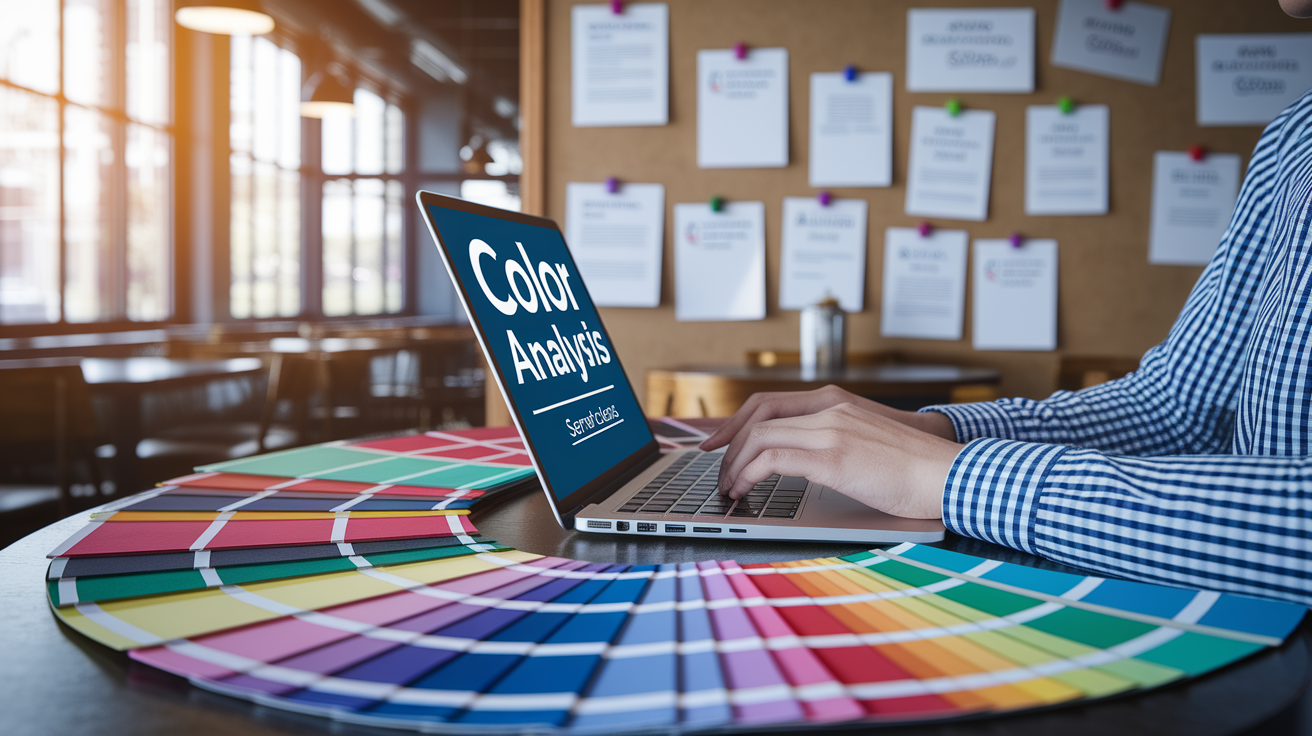
Color Analysis Services A bit like looking for that perfect fit in a big market. It's not about choosing the nearest location, but about seeking out an individual who truly grasps the craft of personal color palettes. The right professional shows you how your skin, eyes, and hair can mix with hues that make you radiate.
There are services from in-home visits to group sessions and the winners are those who utilize established, professional methodologies.
1. Strategic Online Search
Enter obvious keywords such as 'color analysis stylist near me' or 'certified color analyst in [your city]' on your search engine. This pulls up directories of local stylists, consultants, and occasionally even big agencies. Look for ratings and reviews alongside each name, compiling your own mini-list of hopeful candidates.
Visit their websites to explore their offerings. Many color professionals showcase their portfolios and discuss their techniques, including personal color analysis services and before-after photos. This insight provides a clearer idea of what to expect. Flag any site that appears helpful for your personal color journey.
Some international services feature certified color analysts, ensuring you can identify professionals who have undergone rigorous training in color analysis. They can guide you in selecting your ideal color palette and flattering colors that enhance your natural beauty.
2. Social Media Exploration
Social media is a goldmine for finding color experts. Search hashtags like #coloranalysis or #personalcolorpalette. You'll see real stories, client makeovers, and even live demos.
Follow some analysts who post helpful advice or case studies. You will find a lot to learn just by observing their postings. If something resonates, ask a question in the comments or get in touch directly.
Others discuss their color journeys and that provides the opportunity for additional suggestions or recommendations. Post your own passion online. Others in your network will pounce with their suggestions.
3. Local Business Listings
Look at business directories or review sites. They frequently list color analysis services with customer reviews and detailed descriptions. You may discover tiny studios or consultants you wouldn't see anywhere else.
Look for companies with websites or social pages. A lot of boutiques provide color analysis as well, occasionally bundled with style or shopping sessions.
4. Word-of-Mouth Referrals
Check with friends or co-workers to find out if they know a good color analyst. Therefore, there's a good bet that someone has a tale or preferred specialist to lend.
You can mention it in local style groups or forums. There's nothing better than a personal referral to a nice person that provides a reliable service. Even a quick post in your neighborhood group could score you a great tip.
Get a name from a trusted friend.
5. Vetting Your Stylist
Find color analysts who have training from a reputable color analysis organization. Inquire about their experience and style. Check to see if they post photos and client success stories.
A good analyst will inquire about your requirements, demonstrate actual samples, and describe their methodology. The great ones make you feel heard and inspired for the adventure.
In-Person vs. Virtual Consultations
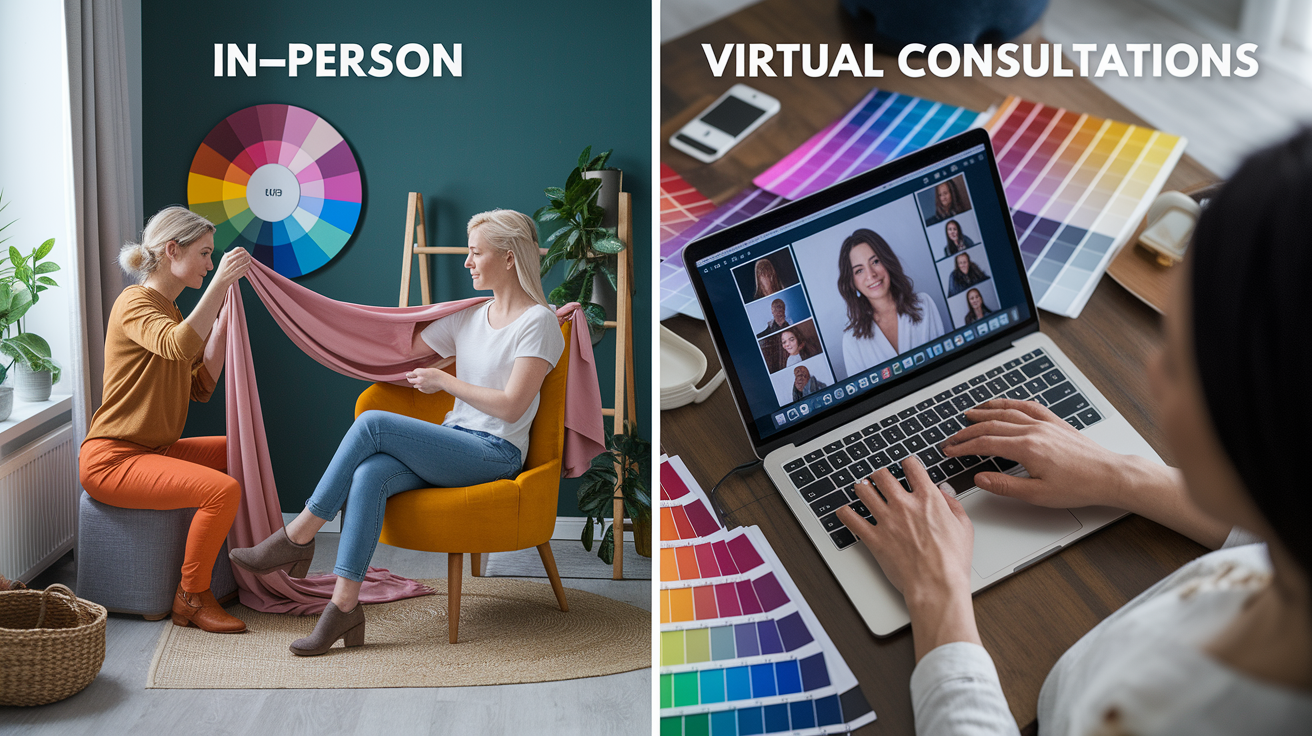
Color analysis has evolved to accommodate just about any lifestyle, with in-person and virtual options alike, including the popular personal color analysis service. While each approach has its ups and downs, they're both shaped by cost, convenience, and the kind of experience you're after.
The In-Person Experience
You'll have to schedule an appointment, drive to a studio, and dedicate a couple hours to a shoot. The process is usually more expensive — a few hundred dollars, sometimes — but you receive in-person time with a stylist who guides you through the process.
There's a magic touch to these meetings that cannot be equaled. That consultant hangs actual fabrics against your skin, matches swatches in sunlight, and observes your reactions firsthand. This first-hand feedback allows the consultant to lead you to your optimal colors.
You can ask questions, observe color shifts with the light, and walk away with a customized set of fabric swatches or a bespoke palette. A lot of people just find the personal attention comforting, and the dialogue frequently generates fresh inspiration for rocking color with confidence.
The Virtual Alternative
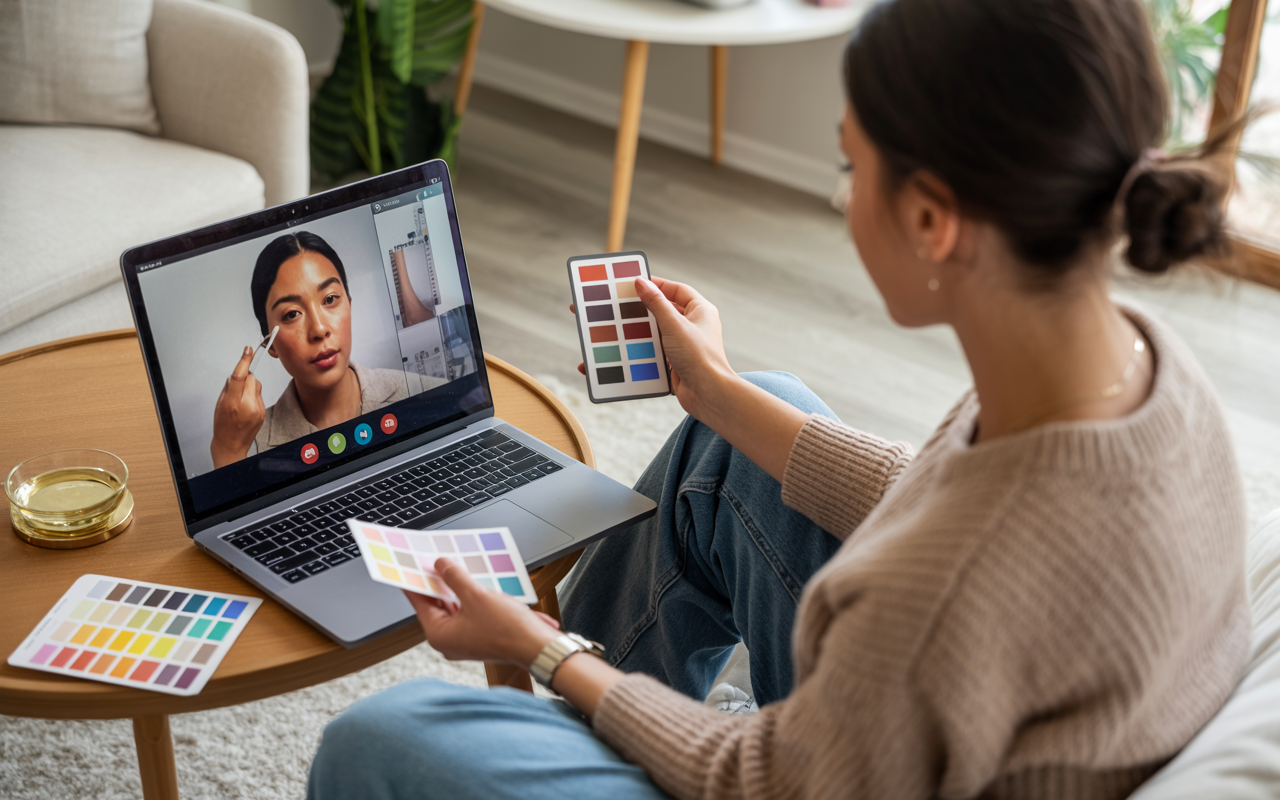
Virtual consultations utilize photos, video calls, and occasionally apps to analyze your skin tone, hair, and eye color. You don't have to leave home or travel, just a nice internet connection and occasionally a cameraphone.
Nevertheless, many stylists do send swatches or palettes digitally — usually based on uploaded photos or even AI analysis. These sessions can be anytime, so they suit busy people or folks who live outside the city.
Cost is another win. Virtual color analysis typically costs between $20 and $100, so it's more accessible. Virtual sessions may miss some subtle color shifts that are more apparent in person, particularly when lighting or screen quality fluctuates.
For others, it's a minor exchange for the cost savings and convenience.
Which is for you?
Consider what's important! Would you rather have an in-person immersive experience, or is convenience and cost the priority? Do you feel at ease with tech, or favor in-person counsel?
If you like to try on, feel fabric and converse with an actual person, in-person may be best.
Checklist for choosing your style:
- Location: Are you close to a color studio?
- Tech comfort: Are you handy with video calls, apps, and uploading photos?
- Budget: Can you spend a few hundred dollars, or do you want to keep it low?
- Experience: Do you want a quick answer, or a detailed, personal session?
The Consultation Process
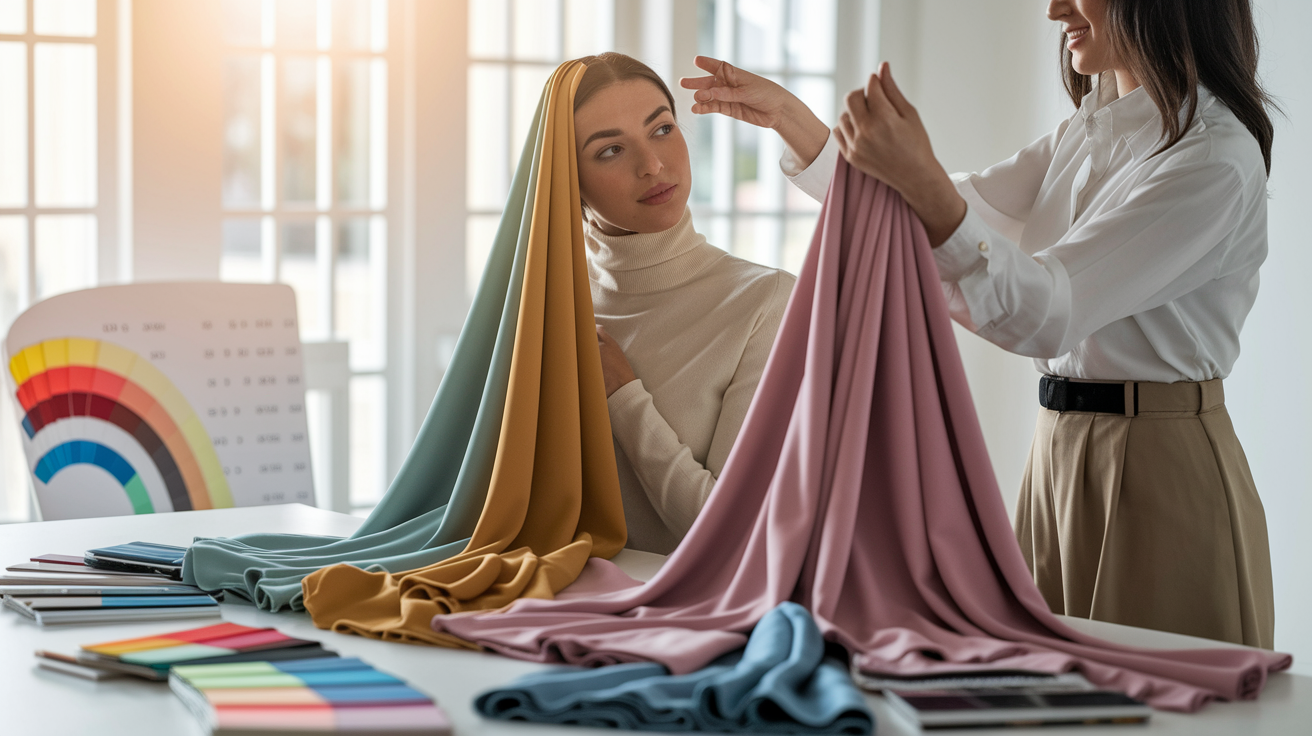
A color analysis consultation is an organized, hands-on process for identifying your personal palette and style personality. It takes around two to four hours, and features a scientific, world-class draping method honed over decades. Three defining steps direct every session, from initial dialog to the ultimate disclosure of your custom, new palette.
Every step aims to get you discovering your best colors, how they work with your features and leave you feeling confident for styling decisions in the future.
The Initial Discussion
The appointment inevitably begins with a free discussion between you and your advisor. Have you ever wanted to share your style goals—maybe you need to look more awake for work, or you can't seem to pick colors for special events?
This is when you discuss what you adore, what you eschew, and how your way of life informs your closet. For example, a busy professional who travels a lot might emphasize versatile, easy-care pieces, whereas a creative type may desire bold, one-of-a-kind shades.
In addition to your immediate preferences, your individual experiences influence your perception of color. Maybe you were raised in an environment where vibrant hues were the norm, or you simply have a penchant for timeless shades.
Your consultant will want to know these, since they help shape realistic goals for your session. Expectations are clearly established so you know both what the process will be like and what you can expect to accomplish by its completion.
The Draping Method
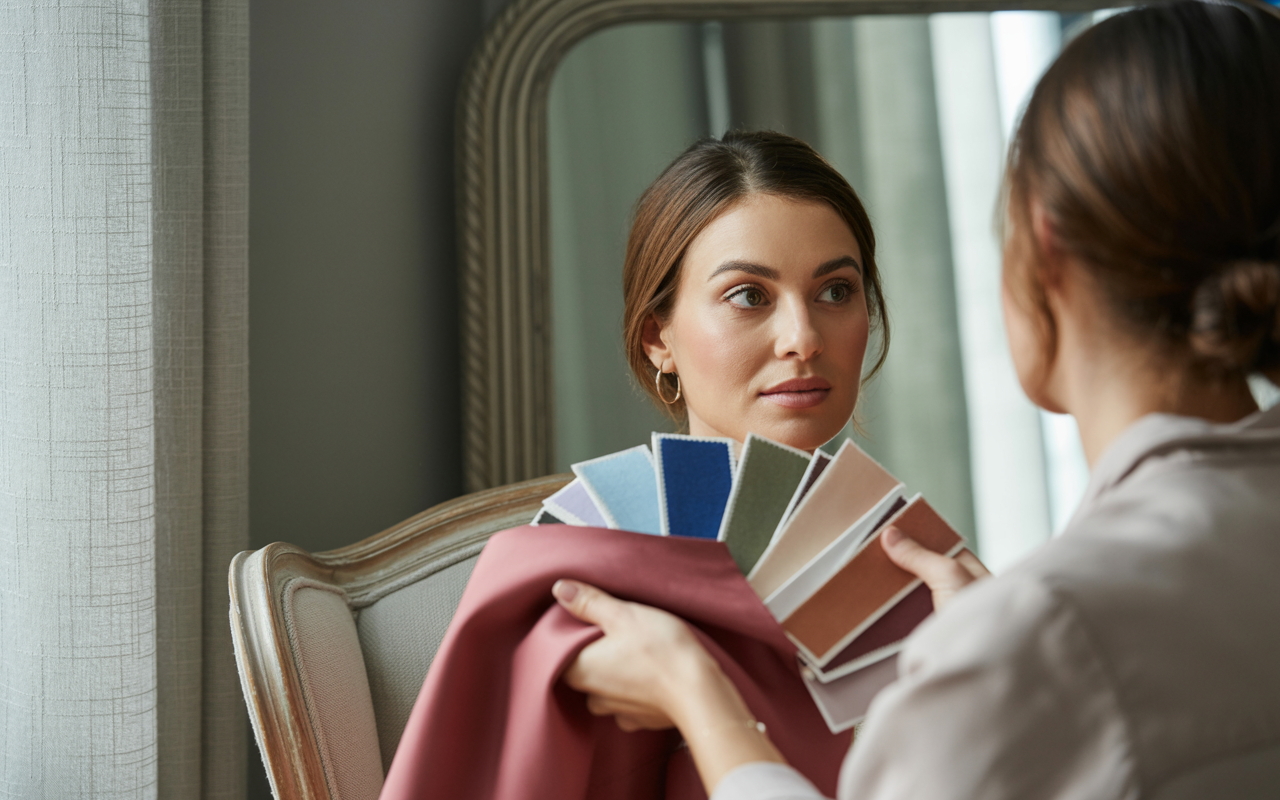
Next is the draping technique, the heart of color analysis. This means draping various colored swatches of fabric around your face to observe how each color plays off your complexion.
It's a scientific process, with more than 40 color combinations tested and for true color—reds, blues, greens, etc.—fabrics are selected! You'll find that certain colors 'illuminate' your face, while others leave you looking drained or washed out.
It's not only what you view, but how you experience it. You speak up if a color makes you feel great, or if one seems off. Even slight variations in color temperature—warm vs. Cool—can move your "season type," particularly if you are near the middle of the spectrum.
Your consultant will take you through these subtle shifts, assisting you in noticing the times when your features appear to shine.
The Palette Reveal
After the draping, the best part arrives: the palette reveal. Your consultant opens a palette of colors selected specifically for you.
This palette becomes your new toolkit for shopping, dressing and even selecting make-up. Every hue in the palette served a function–vibrant hues to energize, muted neutrals for daily wear and accent colors for those very special occasions.
Knowing why each color works for you is crucial. Maybe you've got an assertive blue for power meetings, or a soothing peach for lazy days.
Keep notes and photos, they're a great reference when you're at the mall or planning ensembles. This step makes color theory a practical, daily guide.
The Final Takeaways
- You walk away with your own color palette and an actionable style framework.
- The session provides you with tools for smarter shopping and styling.
- Ongoing support/follow ups are often available if you want more assistance.
- Owning your colors can give you confidence and make decisions easier.
Beyond Your Palette

Color analysis is beyond simply choosing a shirt; it involves a comprehensive personal color analysis that can influence your decisions in home decorating and inform how you construct your lifestyle. Understanding your own flattering colors can significantly affect your self-perception, the selection of your outfits, and the presentation of your unique signature style to the world.
A Confidence Tool
Wearing colors that mimic your natural tones does more than look good — it elevates you. When they look in colors that compliment them, they tend to stand a little taller, smile a little wider. Most find that brown, a color they never liked, doesn't work on them, and that's liberating.
Self-doubt can dissipate when you release hues that don't resonate and choose what makes you glow. Color profoundly influences the mind. Others believe tan or beige will wash them out. Following a scientific draping session, occasionally one-on-one, occasionally group, clients witness why certain colors simply work.
They discover undertones and how a warm or cool palette can make them feel differently about themselves. One gal who for years hid behind black discovered deep blues and rich purples made her feel brave and primed to try new things.
A Shopping Guide
It's a huge time and energy saver to shop with your palette. Begin with the ultimate wardrobe color combinations list. This keeps you on track, and away from those impulse buys that never see the light of fashion day.
ALWAYS, ALWAYS, ALWAYS check labels and look at tones in-store–lighting can be deceiving. Others are shocked to discover that a "navy" shirting is in fact significantly more purple than it is blue in natural light. Multi-taskers in your palette turn into your comfortable, ultra-cool go-to clothes.
Spend a bit more on a few go-to pieces that mix and match to create a wardrobe that works in multiple directions. It's savvy and saves remorse. A color report is your guide — here's what to pick, here's what to avoid!
A Sustainable Mindset
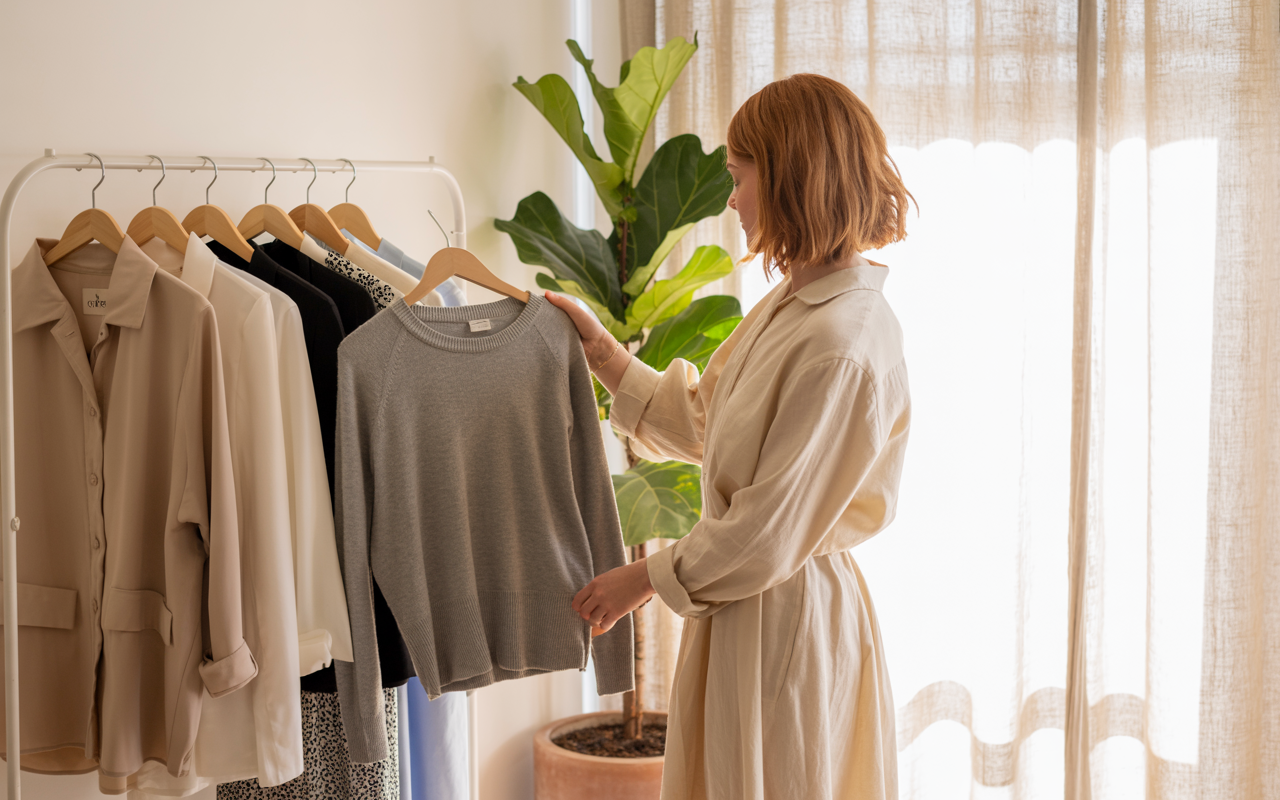
Creating more outfit combinations with fewer clothes. With a palette in place, you shop with intention, not out of habit. This transition can result in less, higher quality apparel.
Most of all, they come to appreciate beautifully crafted pieces that endure, rather than trend-hopping. This shift in thinking benefits the earth. When you buy less and select wisely, you minimize waste and contribute to decelerating the fast fashion cycle.
Color analysis promotes this habit by reducing your attention to what looks best on you.
Cohesive Personal Brand
Your best colors can define more than clothes. They assist you select paints for your house or perhaps build a powerful brand at work. A seasonal palette—like winter or spring—bind your look, your space and your online presence together.
A color consultant can demonstrate how to apply color on a personal brand that's authentic and genuine.
Evaluating a Color Analyst
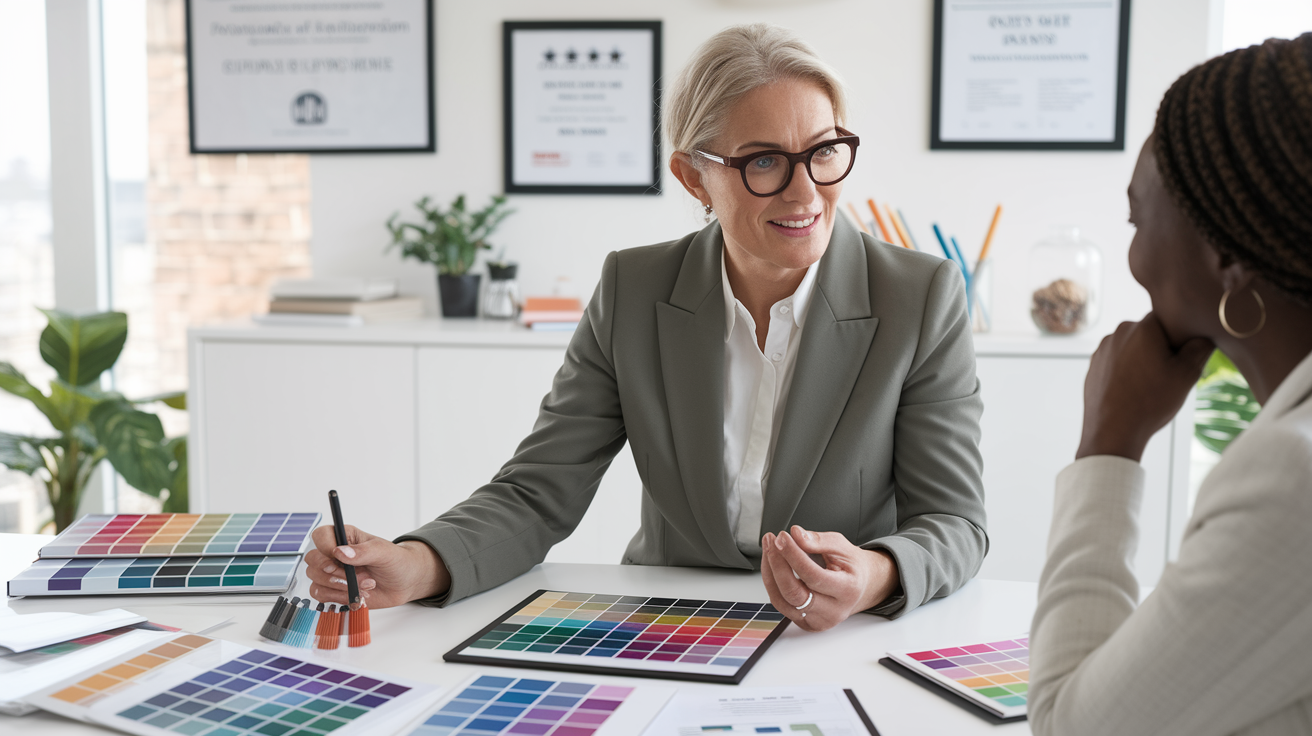
It's a big deal to choose who you trust to analyze your colors. A good color analyst can help you see yourself in an entirely new light, pairing you with colors that highlight your inner beauty and complement your lifestyle. With the addition of some color science to get us started, a session can run upwards of 3 hours, including over 40 test drapes. It's part science, part art, and all personal.
To optimize your session, it helps to know what to look for in selecting your color analyst.
Their Training
The training of a color analyst greatly influences the personal color analysis experience. Just because they are 'formally trained' or 'certified' in color analysis doesn't guarantee they have specifically studied how skin tone, hair, and eyes interact with certain color schemes. It's not merely about selecting what looks nice; there's a methodology involved in creating a personal color palette.
Courses from institutions like the International Association of Color Consultants demonstrate seriousness in their approach to color consult. Inquire whether your analyst stays current by attending workshops, as tricks and capsule palettes evolve, enabling them to guide clients more effectively.
Most analysts keep learning well beyond their initial credential, so don't be shy asking about continuing education. It may be uncomfortable, but it's your entitlement as a customer.
Their Tools
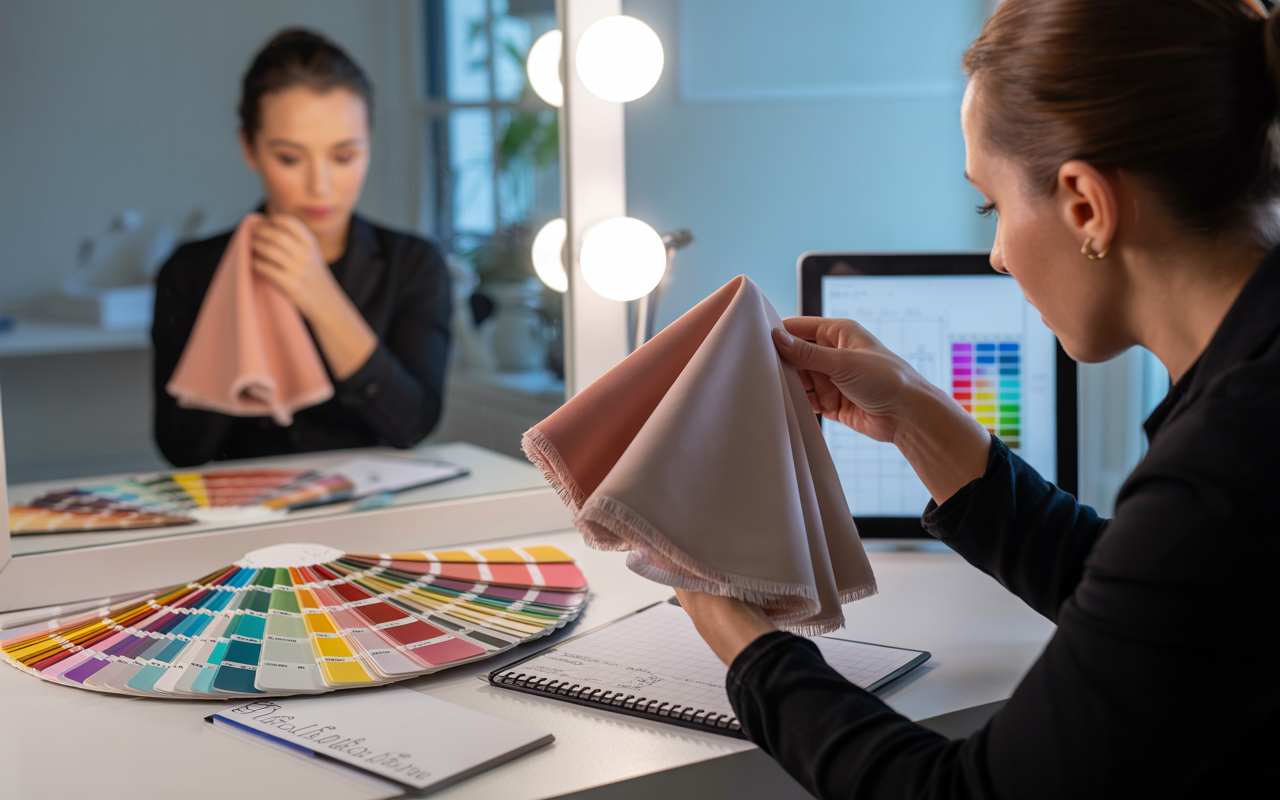
Color analysis depends on a number of tools, each with its own task. The most common are color swatches and test drapes—40 or more—draped beneath your chin to determine how shades play against your skin. There's the color fan, a convenient palette to bring home, and digital tools that assist in undertone verification.
Analysts might even begin with a brief science lesson so you know why specific colors suit you. Precision counts. If tools are antique or lighting's mismatched, reports come out askew. Moisturizer on your face or recent sun exposure can alter the way colors reflect on your skin, so a good analyst will provide pointers about prep, like protecting from the sun for a month.
Inquire about their tools and whether they incorporate a color fan during the session.
Their Reviews
By reading reviews and testimonials, you get a glimpse of what to expect. A few clients discover their true color tone is nothing like what online quizzes determined for them. Good reviews tend to rave about how an analyst made the process transparent and enjoyable or how their new palette transformed their wardrobe and confidence.
Search for in-depth narratives, rather than simple star rankings. Find out if reviews cite tailor-made advice—such as how to pair colors for both your wardrobe and home. It aids to peruse a variety of reviews. If reviews smell funny, listen to your instinct.
Their Pricing
| Service Type | Price Range (USD) | What's Included |
|---|---|---|
| Basic Color Analysis | 80–150 | 3-hr session, test drapes |
| Full Color Consultation | 150–300 | Color fan, palette guide |
| Group Session | 60–100/person | Mini-analysis, Q&A |
Price differs. Price is not merely about the figure, but the worth—some analysts offer color analysis kits, custom palettes, or follow-ups. A professional color analyst can save you money in the long run by guiding your personal color journey to buy clothes that always work!
Conclusion
Color analysis gives you a new perspective on your style. A good one-hour session can help you choose colors that work with your skin and hair. Our local color pros will demonstrate easy tricks that suit your style. Some folks are all about the face-to-face experience. Some people discover that online chats are equally useful. Either way provides you with specific direction, not just a color catalog. Your trusted color analyst will assist you in using your colors for clothes, makeup, and even hair ideas. A lot of people are more confident in their selections after a single session. To test drive it yourself, look at local reviews or friends who tried it. Locate a good match for your style and goals. Try color analysis and watch your shopping and dress sense transform.
Frequently Asked Questions
What is color analysis?
Color analysis is the professional determination of what colors look best with your coloring (skin tone, hair, eyes). This personal color analysis service assists you in selecting flattering colors for clothes, makeup, and accessories that enhance your natural beauty.
How do I find a color analysis service near me?
Try searching online for personal color analysis services, reading reviews, or asking friends for recommendations to locate experts who offer virtual consultations.
What is the difference between in-person and virtual color analysis?
In-person color analysis sessions offer a hands-on approach to discover your personal color palette, while virtual consultations use video calls and questionnaires for a custom color analysis experience.
What happens during a color analysis consultation?
A stylist conducts a personal color analysis, examining your natural coloring and preferences while utilizing color drapes or technology. You'll receive a custom personal color palette and suggestions for integrating it into your daily outfits.
Can color analysis help with makeup and wardrobe choices?
Indeed, personal color analysis can help you choose flattering colors for your makeup, clothing, and accessories that complement your unique features! This will save you time, save you money, and increase your confidence in your style.
How do I choose a qualified color analyst?
Seek out a certified or highly rated analyst who specializes in personal color analysis. Look at client testimonials, portfolios, and professional affiliations.
Is color analysis suitable for all skin tones and genders?
Absolutely, personal color analysis is for all skin tones and genders, assisting anyone in finding flattering colors that enhance their unique signature style.